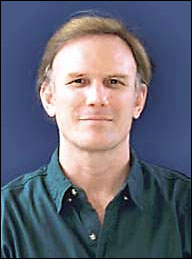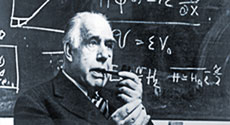Niels Bohr Lecture by David B. Sanders
The Infrared Universe: The Cosmic Evolution of Superstarbursts and Merging Massive Black Holes
New time: Niels Bohr Lectures now at 15.15

David B. Sanders, Institute for
Astronomy, University of Hawaii.
Our current view of galaxy evolution has been dramatically enhanced by new deep field surveys at far-infrared and sub-millimeter wavelengths. Evidence now suggests that the extragalactic luminosity density in the far-IR/submm region of the electromagnetic spectrum exceeds that in the optical/ultraviolet by factors of 2-5 at redshifts z > 1, implying that as much as 80% of the "activity" in galaxies in the distant Universe is hidden by dust. Much of this obscured activity occurs in Luminous Infrared Galaxies (LIRGs), which appear to be triggered by major mergers of gas-rich spirals.
LIRGs are powered by both dust-enshrouded super-starbursts and accretion onto massive black holes (MBH). The LIRG phase ends shortly after the merger of the two MBH, which triggers an ejection of most of the surrounding gas and dust, leaving behind a gas-poor, massive elliptical galaxy.
This major event in galaxy evolution has been largely missed by deep UV/optical surveys. Our own galaxy, the Milky Way will likely suffer a similar fate 5 billion years hence, when it merges with our large neighbor - the Andromeda galaxy. The merger of two MBH (~10^6 Msun), will be one of the prime targets for testing General Relativity using the Laser Interferometer Space Antenna. Our results for the number density of LIRGs suggest that such events may be as common as one per month.
About the Speaker
David Sanders is a professor at the Institute for Astronomy, University of Hawaii. He received his PhD from the State University of New York, Stony Brook in 1981. Professor Sanders is a pioneer in long wavelength astronomy and was among the first advocate a, now widely accepted, evolutionary connection between some of the most extreme phenomena in the universe: major mergers, starbursts and active galactic nuclei.
|

 Niels Bohr Lectures
Niels Bohr Lectures